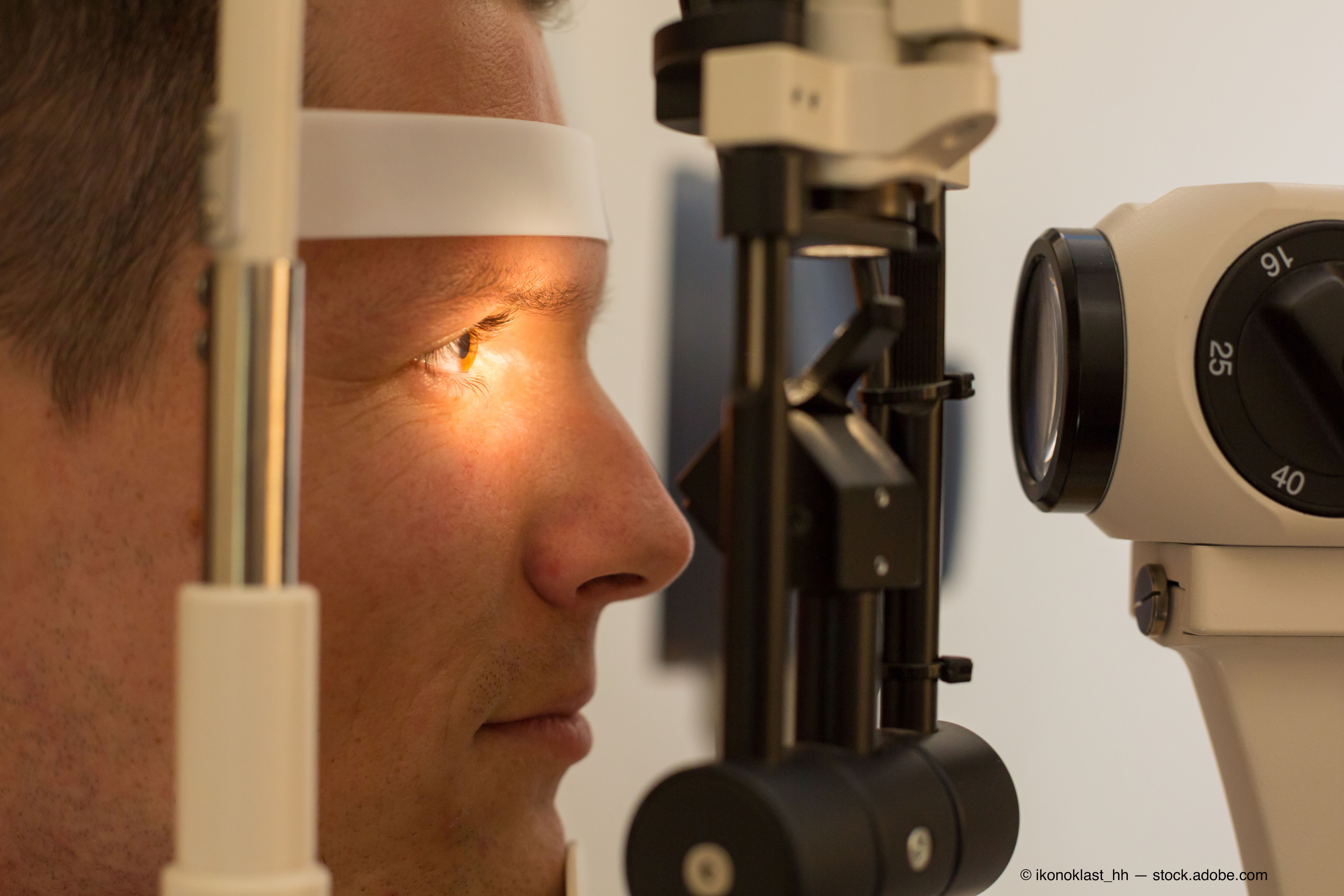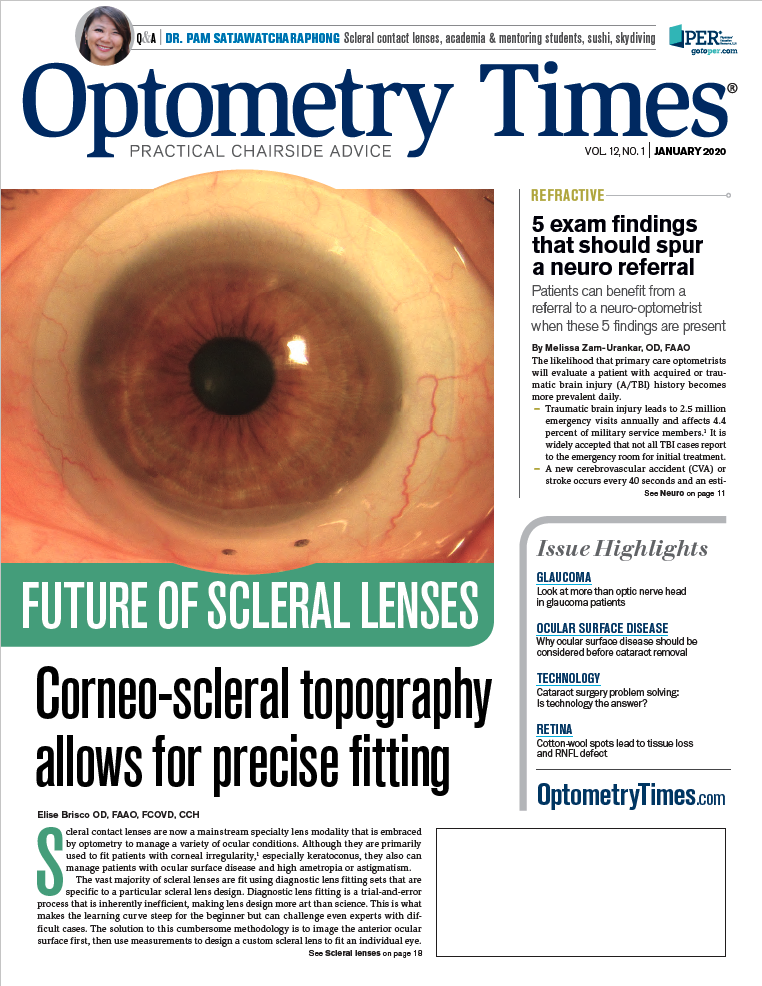Macular diseases: Emerging best practices for diagnosis, management and follow-up protocols
A modern approach to macular disease means previously untreatable patients can be helped.

Macular and retinal diseases are some of the most common eye conditions optometrists see, and each year advances in associated treatments allow ODs to expand the care they provide.
Mohammad Rafieetary, OD, FAAO (moderator); Richard Hamilton, MD; and John Randolph, MD, (presenters) reviewed some of the latest advances in macular and retinal disease management during a lecture at the Retina Scientific Group (SIG) symposium at the American Academy of Optometry 2019 meeting in Orlando.
Related: Look at more than the optic nerve head in glaucoma patients
Inherited retinal diseases and etiologies
Treatment of macular and retinal diseases begins with understanding etiologies. Inherited macular dystrophies are a growing concern for optometrists because many are complex and can manifest symptoms outside of the retina itself.
“It isn’t just the retina; sometimes the vitreous, the retinal pigment epithelium, and the choroid present problems,” Dr. Hamilton says.
Related: Unlock the potential of refractive surgery
For managing retinal conditions like inherited retinal disease or retinitis pigmentosa, optometrists need to be clear on which systemic manifestations indicate retinal concerns and which do not. Dr. Hamilton notes that systemic manifestations from infections can lead to a picture of retinitis pigmentosa, for instance.
“Two of the famous masquerade symptoms are syphilis and toxoplasmosis,” he says.
But optometrists can rely on specific rules to make these decisions, depending on the condition. For example, Dr. Hamilton states that for retinitis pigmentosa, peripheral vision loss is a key concern.
Related: Offer support to patients with inherited eye diseases
“Most people with retinitis pigmentosa will manifest with some degree of peripheral vision loss,” he says.
While older therapies are limited in what they can do, newer technologies address common challenges. The Argus II Retinal Prosthesis System (Second Sight), for example, sits on the surface of the retina and connects to computerized eyeglasses that allow interfacing between healthy inner retinal layers and patient vision.
Another new therapy is Luxturna (voretigene neparvovec-rzyl, Spark Theraputics) gene therapy for retinitis pigmentosa. While this therapy works only on specific genes, it has the distinction of being the only approved gene therapy procedure in the United States.
Related: Cotton-wool spots lead to tissue loss and RNFL defect
Dystrophy conditions and warning signs
Optometrists are on the front lines for catching macular disease early, and they play an essential role in a patient’s long-term prognosis. But Dr. Randolph notes that there will be some cases that need referrals earlier than later.
“Know when to refer these patients,” he says.
Related: Go beyond medical treatment for recurrent corneal erosion
Of the inhered macular dystrophies, Best Disease and Stargardt’s Disease are the most likely presentations ODs can expect to see.
Optometrists should look out for two things, according to Drs. Hamilton and Randolph.
“The first is progressive atrophy,” Dr. Hamilton says.“The second thing that is more acute is choroidal neovascularization.”
If patients with macular problems experience rapid vision loss, or the optometrist notices evidence of bleeding or hemorrhaging, patients should be referred to a specialist.
Another concern to watch for is lamellar macular holes. They can be tricky to spot because the stronger eye may compensate for the compromised vision of the weaker eye and the patient may have no idea that anything is happening. The longer these holes go untreated, the more likely they are to swell and create further complications.
“When you encounter these patients, the key thing is you want is to refer them quickly,” Dr. Randolph says.
Related: SD-OCT shows schisis advancements due to sickle cell
Central serous chorioretinopathy (CSCR)
CSCR is another ccommonly confused condition.
“Classically, we’ve been taught to observe it,” Dr. Randolph says, noting that the condition resolves itself in approximately 98 percent of cases.
For cases that do not resolve on their own, several pharmaceutical and laser-based treatments are available, including technology like MicroPulse Laser Therapy (Iridex), which allows providers to safely treat the central fovea.
Related: Toxoplasmosis retinochoroiditis pictorial review
Plaquenil screening
Optometrists should be aware of changes to Plaquenil (hydroxychloroquine sulfate, Sanofi-Aventis) toxicity screening. Eyecare practitioners have begun to understand that many patients have been overdosed with Plaquenil in the past, and now they require new guidelines on how to administer the drug, Dr. Randolph says.
“It’s a cumulative toxicity,” he says.
He suggests that optometrists stress this to patients: the longer the drug is taken, the higher the risk of toxicity.
In terms of evaluating candidates, optometrists must think beyond the 10-2 visual field and consider adding ocular coherence tomography (OCT) imaging, fundus autofluorescence, and possibly 30-2 or 24-2 visual field screening to better visualize the retinal pigment epithelium.
Dr. Randolph also recommends monitoring these patients over time and increasing appointment frequency as the patient continues to take the drug.
Related: Know the latest on classifying and referring hypertension
Overview of macular degeneration
Although presentations of age-related macular degeneration’s (AMD) vary, technology is improving and opening options to catching the disease early. When evaluating dry macular degeneration, Dr. Randolph notes that drusen size is one of the most important factors.
“The bigger the drusen, the higher the likelihood it is going to cause trouble,” he says.
Related: More than a yellow lesion?
In terms of evaluating the more dangerous wet macular degeneration, new technologies like the ForeseeHome AMD Monitoring Program (Notal Vision) can catch symptoms early-outpacing even the Amsler grid.
“This machine will pick up wet AMD far before the patient even notices any changes on the grid,” Dr. Randolph says.
So while treatments and screening assessments for macular and retinal complications are improving, optometrists are still the first line of defense in catching emerging problems.
“If you are not sure, always refer,” Dr. Randolph says.
More from Greg and Marek: Cataract surgery problem solving: Is technology the answer?

Newsletter
Want more insights like this? Subscribe to Optometry Times and get clinical pearls and practice tips delivered straight to your inbox.